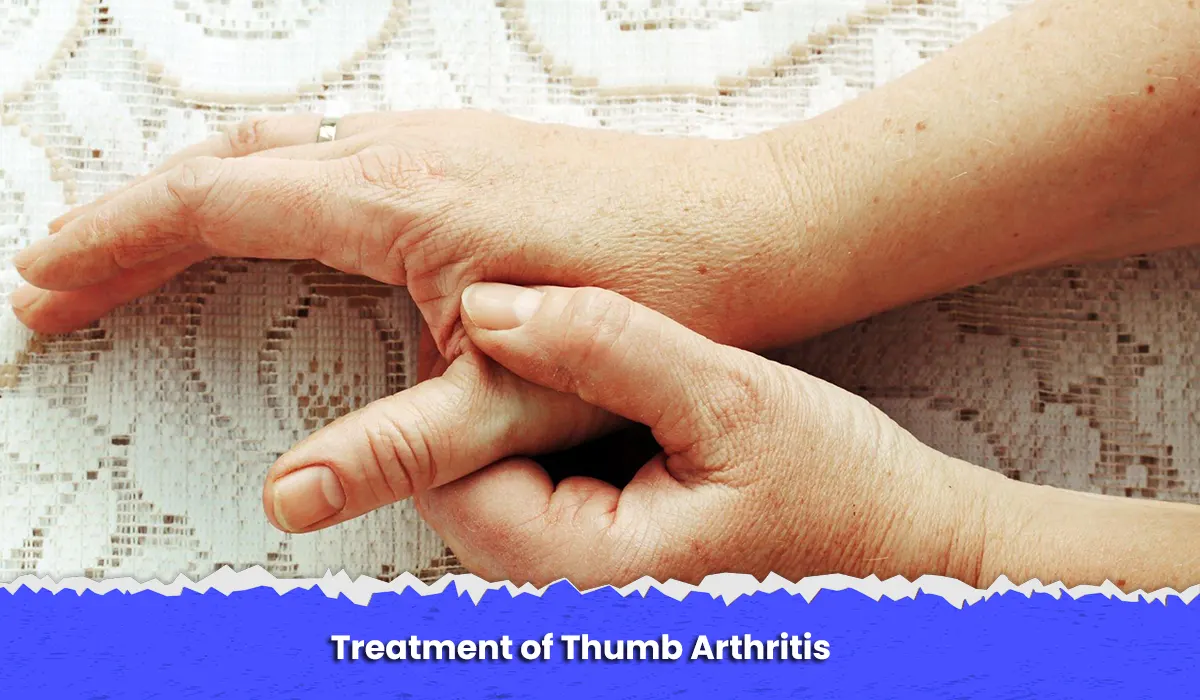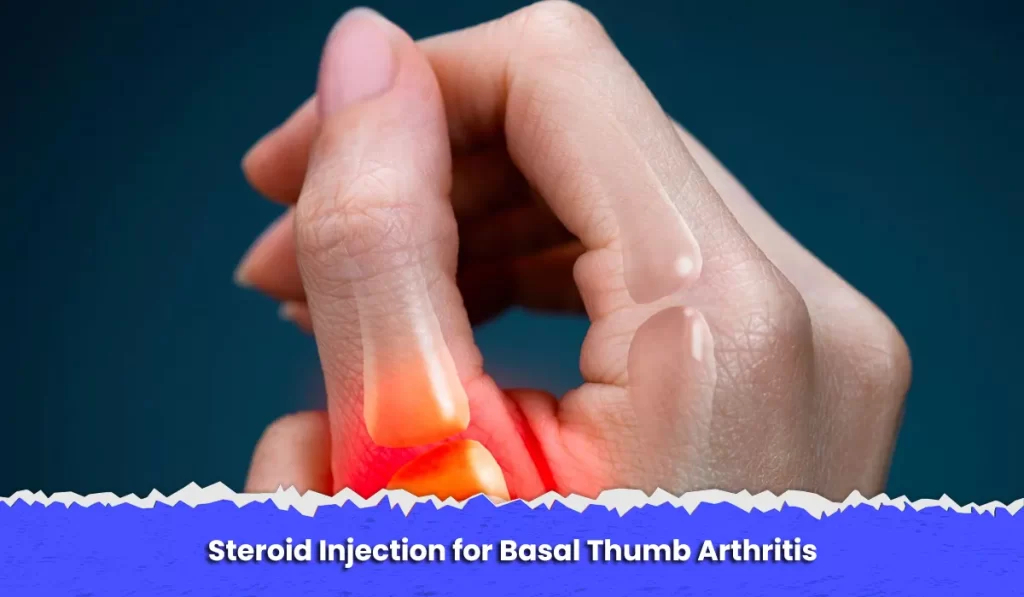There are a lot of pain-related problems such as Osteoporosis, Scoliosis, and Thumb Arthritis. But just because these physical problems are not as serious as they sound, it doesn’t mean that they should not be treated at all. Basal Thumb Arthritis is a problem that occurs in a person’s thumb, and can affect a lot of a person’s basic skills such as writing, eating, and holding objects. In this article, we will be discussing what Thumb Arthritis is, and whether or not a steroid injection can help treat it safely.
What is thumb arthritis?
Thumb arthritis most commonly affects the thumb carpometacarpal joint, which connects the base of the thumb metacarpal to a wrist bone (the trapezium). Thumb arthritis is also known as basal joint arthritis. Basal joint arthritis is fairly widespread as a result of the strains of daily life.
The thumb is the hand’s most significant digit, accounting for 40% of all hand function. With pinching and grasping motions, the thumb basal joint is subjected to enormous tension.
Symptoms of Thumb Arthritis

Thumb arthritis begins with discomfort and swelling around the wrist and the base of the thumb, followed by gradual weakening. Patients find it increasingly difficult to twist open jars or turn doorknobs. Even holding a pen or utensil can be excruciatingly uncomfortable in severe situations. is tren legal uk The base of the thumb may appear swollen and dislocated. Depending on the severity of the condition, stiffness and restricted motion of the thumb might be minor or considerable.
Read More About Anadrol in USA
Causes of Thumb Arthritis and Risk Factors
Females over the age of 40 are more likely to develop basal joint arthritis of the thumb. Thumb arthritis has no established origin, but experts believe it is caused by a combination of variables such as joint ligament laxity, malformed joints, prior fracture or damage to the thumb, and repetitive load on the joint.
In a typical joint, cartilage covers the ends of the bones to allow for a smooth glide with thumb movement and to act as a shock absorber. The thumb basal joint is a particular saddle-shaped joint that allows for extensive motion in common pinching and grasping movements.
The cartilage thins with progressive wear and tear (degenerative arthritis or osteoarthritis), and there is direct contact between the bony surfaces (bone-on-bone).
Bone spurs, or osteophytes, can grow in the joint in later stages, causing the thumb metacarpal to fall out of the saddle. The neighboring joint may likewise experience hyperextension instability (metacarpophalangeal joint).
Treatment of Thumb Arthritis

Initial Treatment for Thumb Arthritis
A variety of conservative methods can help to reduce pain and keep the thumb functional.
Heat and ice can both assist to loosen joints and calm tense muscles. Because the thumb joint is frequently stiff in the morning, you could try taking a morning shower or immersing your hand in warm water first thing in the morning. Ice is often effective at the end of the day for flare-ups or edema, especially after overdoing activities.
Activity modification A few easy alterations at home can be beneficial.
- Switching from door knobs to latches
- Writing using larger grip pens
- Using larger-handled cutlery and gardening tools
- Making use of bottle and jar openers
For pain treatment, Tylenol and nonsteroidal anti-inflammatory medicines (NSAIDs) are available over-the-counter. NSAIDs also have the additional advantage of reducing inflammation and edema. It can be beneficial to use NSAIDs on a regular basis for 5-7 days during an acute flare-up. Ibuprofen (Motrin, Advil), naproxen (Aleve), and several other prescription-strength NSAIDs are examples. NSAIDs should never be taken without food. Long-term high-dose use can cause serious side effects such as stomach ulcers, gastrointestinal bleeding, and kidney damage.
Read More About Stanozolol and Boldenone
Splints and Braces
A variety of braces and splints are available to support the thumb, which places the joint in a resting position and gives significant pain relief. The braces might be soft and made of neoprene, or they can be firm and constructed of plastic. The braces can be worn as a resting splint at night or during activities, depending on your job and demands. Your doctor or hand therapist can inform you about the many possibilities and assist you in determining which is best for you. Many patients benefit from having a hand therapist create a bespoke thermoplast (plastic) thumb splint that fits and supports them better.
Cortisone injections
If bracing, activity limitation, and NSAID use are no longer effective and the pain becomes incapacitating, your doctor may consider a cortisone injection. A long-acting corticosteroid injection into the thumb basilar joint may provide pain relief for a few months. However, the relief is just brief, and the arthritis in the joint will worsen.
Surgery
If conservative treatment no longer works and you have ongoing severe pain and weakness, there are a few surgical treatments that can provide pain relief and better function. Consult with your hand surgeon to discuss your surgery alternatives. Thumb arthritis surgical therapy options may include:
Thumb osteotomy
To relieve pressure on the joint, your surgeon can cut the thumb metacarpal and realign the bone. In the early stages of thumb arthritis, correction of the deformity and change in touch relieves discomfort by off-loading the joint.
Thumb arthrodesis (fusion)
Your surgeon will remove the damaged cartilage and fuse the bones in the afflicted joint during this treatment. This increases stability and reduces pain. Although your grip strength and ability to lift with your thumb without pain improves, your flexibility suffers.
Thumb arthroplasty (joint replacement)
Although plastic and joint replacements are available for the thumb, most surgeons prefer to repair the thumb basal joint using neighboring soft tissue (tendon). This surgery involves the removal of all or part of the bone in the arthritic joint, followed by tendon arthroplasty. The surgeon reconstructs the thumb ligament using your tendon to restore stability (suspensionplasty) and uses remnants of the tendon as a pillow or cushion (interposition) for the joint.
Read More About Anadrol vs Dianabol
Recovery after surgery
For the first 6 weeks following any of the three surgical procedures, you will be wearing a thumb splint or brace. After 6 weeks of immobilization, you will work with a hand therapist on range of motion and thumb flexibility. Most individuals have little or no pain after three months. At this point, strengthening activities are started, both through hand treatment and through a home exercise regimen. At the 6-month mark, the majority of patients regain strength and resume routine activities.

